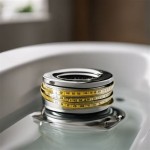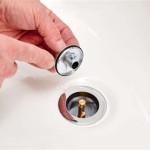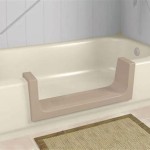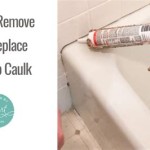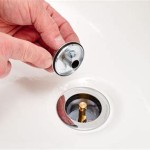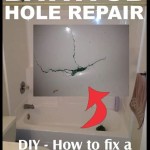How To Fix a Clogged Toilet and Bathtub
Clogged drains are a common household plumbing issue, often causing inconvenience and frustration. While some clogs require professional assistance, many can be resolved with simple DIY methods. This article provides a comprehensive guide to troubleshooting and fixing clogged toilets and bathtubs, empowering homeowners to address these issues effectively.
Understanding the Causes of Clogs
Before attempting any fix, understanding the root cause of the clog is crucial. Toilet clogs typically result from excessive toilet paper, feminine hygiene products, or hard objects flushed down the drain. Bathtub clogs, on the other hand, are often caused by hair, soap scum, and dirt buildup.
Tools and Materials
Gathering the necessary tools beforehand streamlines the unclogging process. Essential tools include a toilet plunger, a sink or cup plunger, a plumbing snake (also known as an auger), rubber gloves, a bucket, and old towels or rags.
Fixing a Clogged Toilet
The first line of defense against a clogged toilet is using a toilet plunger. Ensure the plunger completely covers the toilet drain opening to create a tight seal. Push and pull the plunger vigorously up and down, maintaining the seal, to generate pressure that can dislodge the clog. Avoid plunging with excessive force, as this can damage the toilet. If plunging fails, a plumbing snake can be used to break up or retrieve the obstruction. Insert the snake into the drain and rotate it while advancing it further down. Once resistance is felt, continue rotating to break up the clog. Retract the snake and flush the toilet to ensure the clog is cleared.
Preventing Future Toilet Clogs
Prevention is key to avoiding future toilet clogs. Encourage family members to only flush toilet paper and human waste. Avoid flushing items like wipes, cotton balls, or other foreign objects. Regularly checking for and removing any potential obstructions can also prevent clogs from forming.
Fixing a Clogged Bathtub
Bathtub clogs often manifest as slow draining water. The first step is to remove the drain stopper. Depending on the type of stopper, this may involve unscrewing it or pulling it out. Once removed, inspect the stopper and drain for hair and debris. Remove any visible obstructions. A bent wire hanger can be fashioned into a makeshift tool to retrieve hair from the drain. Next, use a sink or cup plunger to create suction and dislodge the clog. If plunging doesn't work, pouring a mixture of baking soda and vinegar down the drain can help dissolve soap scum and grease buildup. Let the mixture sit for 30 minutes, then flush with hot water. Alternatively, a plumbing snake can be used to reach deeper clogs.
Addressing Stubborn Bathtub Clogs
For particularly stubborn clogs, removing the p-trap, the curved pipe located beneath the sink, may be necessary. Place a bucket under the p-trap to catch any water. Carefully loosen the slip nuts connecting the p-trap to the drain pipes. Remove the p-trap and clean out any debris. Reassemble the p-trap, ensuring the nuts are tightened securely to prevent leaks.
Maintaining a Clear Bathtub Drain
Regular maintenance can significantly reduce the occurrence of bathtub clogs. Install a hair strainer over the drain to catch hair and prevent it from entering the pipes. Periodically flush the drain with hot water to melt away soap scum and grease. A mixture of baking soda and vinegar can be used monthly as a preventative measure.
When to Call a Plumber
While many clogs can be resolved with DIY methods, some situations necessitate the expertise of a professional plumber. If multiple drains are clogged simultaneously, it could indicate a deeper issue within the main plumbing system. Persistent clogs that resist all DIY attempts also warrant a plumber's attention. Additionally, if sewage backups occur, contact a plumber immediately to address the problem.
Important Safety Precautions
When working with plumbing, safety should be a top priority. Always wear rubber gloves to protect hands from bacteria and chemicals. When using chemical drain cleaners, follow the manufacturer's instructions carefully and ensure adequate ventilation. Avoid mixing different chemical drain cleaners, as this can create dangerous fumes. If unsure about any step in the unclogging process, it's always best to err on the side of caution and consult a qualified plumber.

5 Easy Ways To Unclog Bathtub Drain

Why Is Water Backing Up In My Bathtub After I Flush

How To Easily Fix Clogged Bathtub And Toilet Drainage Systems

Toilet And Shower Clogged At The Same Time Here S What Happening

How To Easily Unclog Bathtub Shower Drain In 5 Minutes Jonny Diy

Unclog Drain How To A Shower Or Toilet

Flush Toilet Backing Up In Shower Or Tub Fix Fast Easy

Clogged Toilet Here S How To Fix It Paschal Air Plumbing Electric

Toilet Backing Up Into Shower Why It Happens And How To Fix Bacon Plumbing Heating Air Electric

How To Fix A Clogged Toilet Plumbing Repairs
Related Posts

